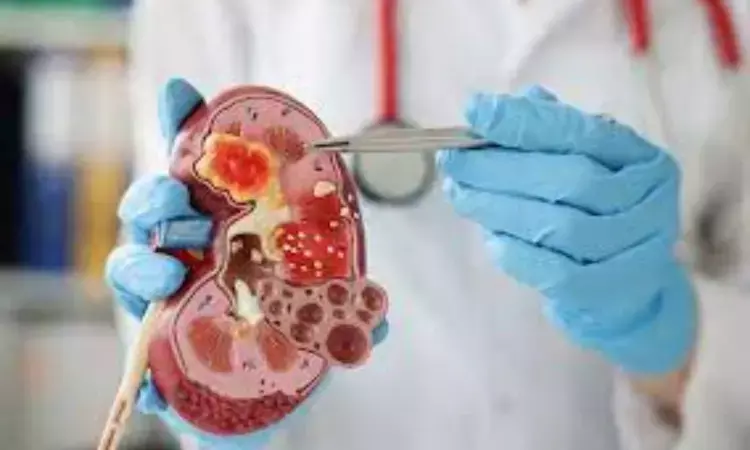- Home
- Medical news & Guidelines
- Anesthesiology
- Cardiology and CTVS
- Critical Care
- Dentistry
- Dermatology
- Diabetes and Endocrinology
- ENT
- Gastroenterology
- Medicine
- Nephrology
- Neurology
- Obstretics-Gynaecology
- Oncology
- Ophthalmology
- Orthopaedics
- Pediatrics-Neonatology
- Psychiatry
- Pulmonology
- Radiology
- Surgery
- Urology
- Laboratory Medicine
- Diet
- Nursing
- Paramedical
- Physiotherapy
- Health news
- Fact Check
- Bone Health Fact Check
- Brain Health Fact Check
- Cancer Related Fact Check
- Child Care Fact Check
- Dental and oral health fact check
- Diabetes and metabolic health fact check
- Diet and Nutrition Fact Check
- Eye and ENT Care Fact Check
- Fitness fact check
- Gut health fact check
- Heart health fact check
- Kidney health fact check
- Medical education fact check
- Men's health fact check
- Respiratory fact check
- Skin and hair care fact check
- Vaccine and Immunization fact check
- Women's health fact check
- AYUSH
- State News
- Andaman and Nicobar Islands
- Andhra Pradesh
- Arunachal Pradesh
- Assam
- Bihar
- Chandigarh
- Chattisgarh
- Dadra and Nagar Haveli
- Daman and Diu
- Delhi
- Goa
- Gujarat
- Haryana
- Himachal Pradesh
- Jammu & Kashmir
- Jharkhand
- Karnataka
- Kerala
- Ladakh
- Lakshadweep
- Madhya Pradesh
- Maharashtra
- Manipur
- Meghalaya
- Mizoram
- Nagaland
- Odisha
- Puducherry
- Punjab
- Rajasthan
- Sikkim
- Tamil Nadu
- Telangana
- Tripura
- Uttar Pradesh
- Uttrakhand
- West Bengal
- Medical Education
- Industry
IV USG-guided shockwave lithotripsy effective for radiolucent ureteral stones, reveals study

A recent retrospective study found that intravenous urography-assisted fluoroscopy-guided shockwave lithotripsy (SWL) helps in the effective treatment of radiolucent ureteral stones when compared to standard fluoroscopy-guided SWL. The findings were published in the recent issue of Asian Journal of Urology.
The study included a total of 734 patients who underwent SWL were divided into two groups. In this, 98 patients received the IVU protocol (Group I) and 636 underwent the standard non-IVU protocol (Group N). The primary measure of success was the stone-free rate within 30 days post-treatment which was defined as no residual stones detected without requiring additional interventions.
This extensive analysis revealed that 37.8% of patients in Group I were stone-free within one session and 30 days when compared to 31.7% in Group N. Group I showed a slightly higher success rate, while the difference was not statistically significant (p=0.20). This indicated that the use of IVU does not significantly improve the effectiveness of SWL for radiolucent stones when compared to standard treatment for radiopaque stones.
Also, the study examined secondary outcomes like the rate of conversion to ureteroscopy which is a more invasive procedure and the complication rate. Both groups showed similar results, with no significant differences in the conversion rate (p=0.26) and complication rate (p=0.70). Only one patient underwent a complication related to the contrast medium used in IVU by developing minor skin redness.
A propensity score matching analysis was performed to ensure the comparability of the groups which resulted in 88 matched pairs. This analysis reinforced the initial findings where 35.2% of patients in Group I and 37.5% in Group N achieved stone-free status within one session and 30 days (p=0.88).
The study concludes that radiolucent stones can be effectively and safely treated with SWL not regarding the utilization of IVU. This finding is significant for clinical practice where the standard SWL procedure is just as effective for radiolucent stones as for radiopaque stones by potentially simplifying the treatment protocol for different types of ureteral stones. Overall, the findings of this study provide crucial insights in to this aspect Further research and prospective studies are imperative to explore long-term outcomes and the cost-effectiveness of IVU-assisted SWL to refine treatment guidelines by ensuring optimal patient care in urology.
Source:
Somiya, S., Koterazawa, S., Ito, K., Haitani, T., Makino, Y., Arakaki, R., Kawase, N., Higashi, Y., Yamada, H., & Kanno, T. (2024). Clinical outcome of intravenous urography-assisted shockwave lithotripsy for radiolucent ureteral stones. In Asian Journal of Urology. Elsevier BV. https://doi.org/10.1016/j.ajur.2024.03.002
Neuroscience Masters graduate
Jacinthlyn Sylvia, a Neuroscience Master's graduate from Chennai has worked extensively in deciphering the neurobiology of cognition and motor control in aging. She also has spread-out exposure to Neurosurgery from her Bachelor’s. She is currently involved in active Neuro-Oncology research. She is an upcoming neuroscientist with a fiery passion for writing. Her news cover at Medical Dialogues feature recent discoveries and updates from the healthcare and biomedical research fields. She can be reached at editorial@medicaldialogues.in
Dr Kamal Kant Kohli-MBBS, DTCD- a chest specialist with more than 30 years of practice and a flair for writing clinical articles, Dr Kamal Kant Kohli joined Medical Dialogues as a Chief Editor of Medical News. Besides writing articles, as an editor, he proofreads and verifies all the medical content published on Medical Dialogues including those coming from journals, studies,medical conferences,guidelines etc. Email: drkohli@medicaldialogues.in. Contact no. 011-43720751


